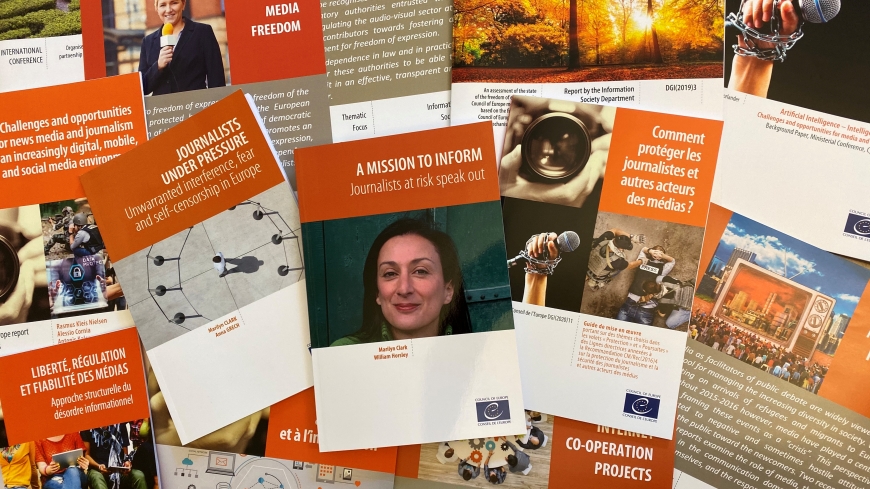Undue pressures and harassment against journalists – often leading the limitation or even the suppression of the dissemination of public interest information and self-censorship – are still occurring among certain journalists in Europe, says a new book titled “A mission to inform: journalists at risk speak out” co-authored by Prof Marilyn Clark and Mr William Horsley. The book will be launched during the on-line event “Enhancing the Safety of Journalists in Europe” organized by the Council of Europe on Wednesday, 14 October starting from 1.00 pm.
The book complements the 2017 Study “Journalists under pressure. Unwarranted interference, fear and self-censorship in Europe”. While the 2017 Study was based on a survey with 940 journalists from across Council of Europe member states, the book “A mission to inform: journalists at risk speak out” is based on interviews with a handful of journalists across Council of Europe member states who discussed into depth the forms of pressure they have been subjected to due to their work and the way they found resilience to carry on in their “mission to inform”.
The findings of the book are not representative of the general situation in the Council of Europe member states, however the book offers important insights on the issues that have to be addressed in law and practice to improve the situation of journalists at risk.
- To learn more about the book download it here.
- The agenda of the launch event on 14 October is available here. The launch event will take place in English.
- To register for the launch event, please use the form here.
- Speakers' bios can be found here.
Executive summary extract
This book is a unique exploration of the intimidation of journalists across Council of Europe member states and it provides an invaluable resource to everyone concerned with the protection of journalists, including government authorities and media practitioners.
The book is based on in-depth interviews with 20 journalists from 18 different countries. The journalists were selected for their experience and skill in reporting in the public interest and exposing injustice and abuses. Each of these journalists shared their insights into the realities of doing cutting-edge journalism to bring the truth to light; they spoke about their first-hand experience of threats, hostility and intimidation, surveillance and cyberattacks, and about self-censorship, resilience and coping strategies, as well as about what they portray as routine failures by state authorities to give journalists the protection they need to fulfil their public watchdog role.
While the findings of the book cannot be representative of the general situation in the member states due to the restrained number of interviewed journalists, each of the book’s five chapters provides insights for understanding and putting in place essential safeguards in law and practice for journalists to fulfil their “mission to inform”.
Chapter I investigates the pressures experienced by the participating journalists in their work; Chapter II reveals the high price journalists often pay for their commitment in terms of the psychological and other negative impacts on their personal lives; Chapter III explores how the legal, political, economic and cultural contexts of their particular environments shape the experiences of journalists in terms of the obstacles and pressures that hinder their work; Chapter IV discusses how the interviewed journalists develop resilience to continue their work despite the often hostile environments in which they operate; Finally, Chapter V takes stock of the lessons to be learned from these revealing testimonies and observations by journalists at the front line of their profession.
Based on the data analysed, this book calls for effective measures to protect the safety of journalists at risk, prosecute the perpetrators of attacks and create genuinely favourable environments for free, independent and diverse media. The forward-looking measures outlined include legal and regulatory reforms; effective measures of protection; improved oversight and reporting mechanisms to guard against threats; public media literacy programmes; and additional support through professional training and psychosocial support where needed.
Methodology extract
The aim of this qualitative research project is to develop an in-depth socio-psychological interpretation of the complexity of journalists’ experiences of facing high levels of obstruction, intimidation or threat. This is done by exploring their subjective worlds and their feelings, motivations, perceptions and action strategies. To remain as faithful as possible to the experiences of the journalists interviewed for this study, the book journalists’ own words as often as possible.




